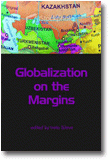
Globalization on the Margins
Education and Post-Socialist Transformations in Central Asia
By:
Iveta Silova, College of Education, Lehigh University
Published 2011
The essays in Globalization on the Margins explore the continuities and changes in Central Asian education development since the collapse of the Soviet Union in 1991. Reflecting on two decades of post-socialist transformations, they reveal that education systems in Central Asia responded to the rapidly changing political, economic, and social environment in profoundly new and unique ways. Some countries moved towards Western models, others went backwards, and still others followed entirely new trajectories. Yet, elements of the “old” system remain.
Rather than viewing these post-Soviet transformations in isolation, Globalization on the Margins places its analyses within the global context by reflecting on the interaction between Soviet legacies and global education reform pressures in the Central Asian countries of Kazakhstan, Kyrgyzstan, Tajikistan, Turkmenistan, and Uzbekistan. Instead of portraying the transition process as the influx of Western ideas into the region, the authors provide new lenses to critically examine the multidirectional flow of ideas, concepts, and reform models within Central Asia.
Notwithstanding the variety of theoretical perspectives, methodological approaches, and conceptual lenses, the authors have one thing in common: both individually and collectively, they reveal the complexity and uncertainty of the post-Soviet transformations. By highlighting the political nature of the transformation processes and the uniqueness of historical, political, social, and cultural contexts of each particular country, Globalization on the Margins portrays post-Soviet education transformations as complex, multidimensional, and uncertain processes.
CONTENTS
Acknowledgments. Introduction: Education and Postsocialist Transformations in Central Asia—Exploring Margins and Marginalities, Iveta Silova. PART I: GEOPOLITICS ON THE MARGINS: INTERNATIONAL AID AND LOCAL POLITICS IN HIGHER EDUCATION REFORMS. A Comment on the Changes in Higher Education in the Post-Soviet Union, Steven P. Heyneman. The Geography and Geometry of the Bologna Process: Central Asian Higher Education in the New Global Periphery, Voldermar Tomusk. Education as Foreign Policy: The European Union in Central Asia, Peter D. Jones. Regional Histories, Critical Thought, and the University of Central Asia: Between the Global and Local, North and South, Jeff Sahadeo. Higher Education Admissions Regimes in Kazakhstan and Kyrgyzstan: Difference Makes a Difference, Todd Drummond. Internationalizing Higher Education in Central Asia: Definitions, Rationales, Scope, and Choices, Martha C. Merrill. PART II: TRANSITOLOGIES ON THE MARGINS: CHANGING SCHOOLS, CHANGING TEACHERS. Influencing the Status of Teaching in Central Asia, Christine Harris-Van Keuren. Ten-Plus-One Ways of Coping With a Teacher Shortage: A School-Level Analysis of a Teacher Shortage in Kyrgyzstan, Gita Steiner-Khamsi, Nurbek Teleshaliyev, Gulzhamal Sheripkanova-MacLeod, and Ainura Moldokmatova. Blaming the Context not the Culprit: Limitations on Student Control of Teacher Corruption in Post-Soviet Kyrgyzstan, Eric M. Johnson. Teaching as a Profession in the Kyrgyz Republic: The Quest for Building /
Rebuilding the Knowledge Base, Alan J. DeYoung. Revisiting Teacher Professionalism Discourse Through Teachers’ Professional Lives in Post-Soviet Tajikistan, Sarfaroz Niyozov. Active Learning Instructional Methods in Mathematics and Science: A Comparative Analysis of Post-Soviet Countries Using TIMSS 2007 Data, Carina Omoeva. Grassroots Educational Initiatives in Turkmenistan, Victoria Clement. About the Authors.
REVIEWS
"...Globalization on the Margins offers comprehensive, insightful, and nuanced examination of education transformation in the post-Soviet republics of Central Asia. The book can thus serve as a fine guidebook for teachers, researchers, and educational administrators and will also be useful for development workers in Central Asia. The publication makes another valuable contribution toward a better understanding of Central Asian society in general and education in particular." DUISHON SHAMATOV University of Central Asia in Comparative Education Review
-
Paperback978-1-61735-200-3
Web price: $45.04 (Reg. 52.99)
-
Hardcover978-1-61735-201-0
Web price: $80.74 (Reg. 94.99)
- eBook9781617352027

-
 (Re)Envisioning Social Studies Education Research
Current Epistemological and Methodological Expansions, Deconstructions, and Creations
(Re)Envisioning Social Studies Education Research
Current Epistemological and Methodological Expansions, Deconstructions, and Creations
-
 Affirming Identity, Advancing Belonging, and Amplifying Voice in Sororities and Fraternities
Affirming Identity, Advancing Belonging, and Amplifying Voice in Sororities and Fraternities
-
 Expanding the Vision of Faculty Learning Communities in Higher Education
Emerging Opportunities for Faculty to Engage Each Other in Learning, Teaching, and Support
Expanding the Vision of Faculty Learning Communities in Higher Education
Emerging Opportunities for Faculty to Engage Each Other in Learning, Teaching, and Support
-
 History Education and Historical Inquiry
History Education and Historical Inquiry
-
 Institutional Diversity in American Postsecondary Education
Institutional Diversity in American Postsecondary Education
-
 Promoting Equitable Classroom Practices in Higher Education
Approaches Beyond Curriculum
Promoting Equitable Classroom Practices in Higher Education
Approaches Beyond Curriculum
-
 The Handbook for Aspiring Higher Education Leaders
The Handbook for Aspiring Higher Education Leaders

